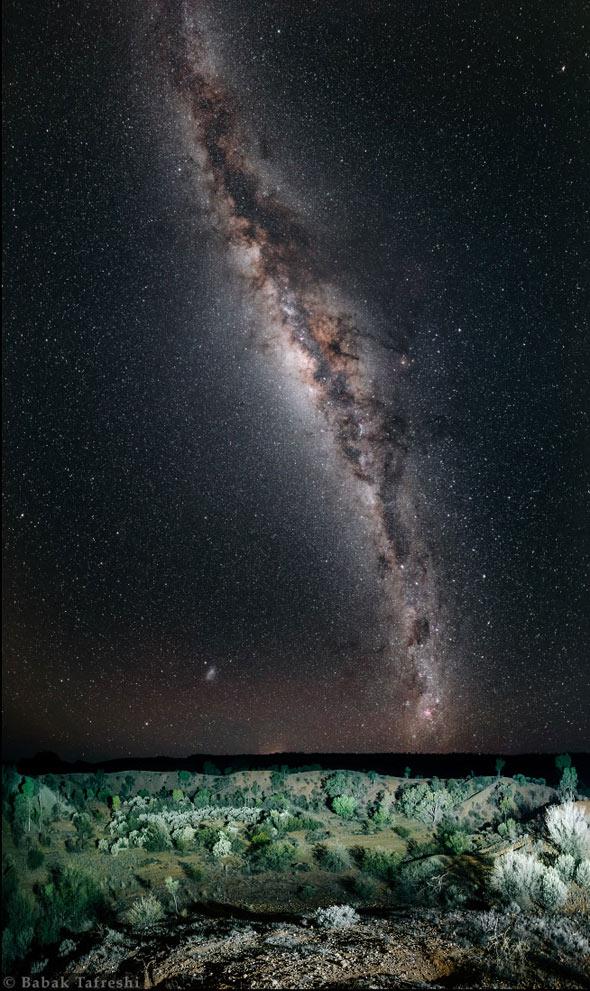My pal Babak Tafreshi takes wonderful pictures of the night sky, and he sent me the link to that shot above recently. Isn’t it lovely? I urge you to click it to see the original, which is somewhat bigger (plus I had to compress the file size a bit here, which makes it look a bit chunky).
It’s an unusual shot, encompassing a huge swath of sky; by my eye, about 140° from the bottom to the top. You can see the pinkish glow of the massive Carina nebula at the bottom, and the bright star Vega near the top.
Of course, the prize here is the Milky Way itself, our home galaxy, a flattish disk that we see as a broad splash across the sky. That milky glow is actually the combined might of billions of stars faded by the terrible distance to them. You can also see streamers and ribbons of dark dust blocking the light from the stars behind them.
But there’s more to this, a secret. Babak took this picture in Australia, and not just any spot in Oz: He was in the Northern Territory at Henbury Meteorites Conservation Reserve. At that location, more than 4,000 years ago, an iron asteroid slammed down into the desert. It broke up as it came in, splitting into more than a dozen big pieces. When they hit, they carved craters into the ground, the largest of which is more than 200 meters across (though it may actually be two craters that merged). The smallest is less than 10 meters across. At least 2 tons of meteorites have been recovered.
I’ve seen some Henbury meteorites; on the outside they’re orange-red, like a rust color, a patina from the Australian desert dust (my friend Geoffrey Notkin is a meteorite hunter and has some nice ones for sale). If you cut one open and etch it with a weak nitric acid solution, a gorgeous crystal pattern emerges called the Widmanstätten pattern. It’s a crystal that grows as molten iron and nickel cool extremely slowly. It’s thought that these meteorites come from an asteroid that was big enough to undergo differentiation, where heavier minerals sank to the center and lighter ones floated up to the surface. As the core of this asteroid cooled, the patterns grew as the metal crystallized.
But then some other asteroid came along and impacted the big one. It must have been an immense catastrophe, because it shattered the large asteroid, sending trillions of small pieces of shrapnel into the solar system. Mind you, this happened more than 4 billion years ago.
After circling the Sun for all those eons, the pieces found a middling-sized blue-green planet in its way. It fell in Australia and had to wait more than four millennia before it was identified as a piece of the early solar system brought to Earth.
So yeah, the site where Babak took that beautiful picture is in many ways the equal of the subject itself. A photo brings the Universe down to Earth, but sometimes the Universe can do that on its own.
Babak’s photos can be seen on The World At Night website; this is a group dedicated to creating photos or videos of night sky attractions with famous landmarks in the foreground. He also has his own site, Dream View. Seriously, check out his nebulae pictures. Fantastic!
